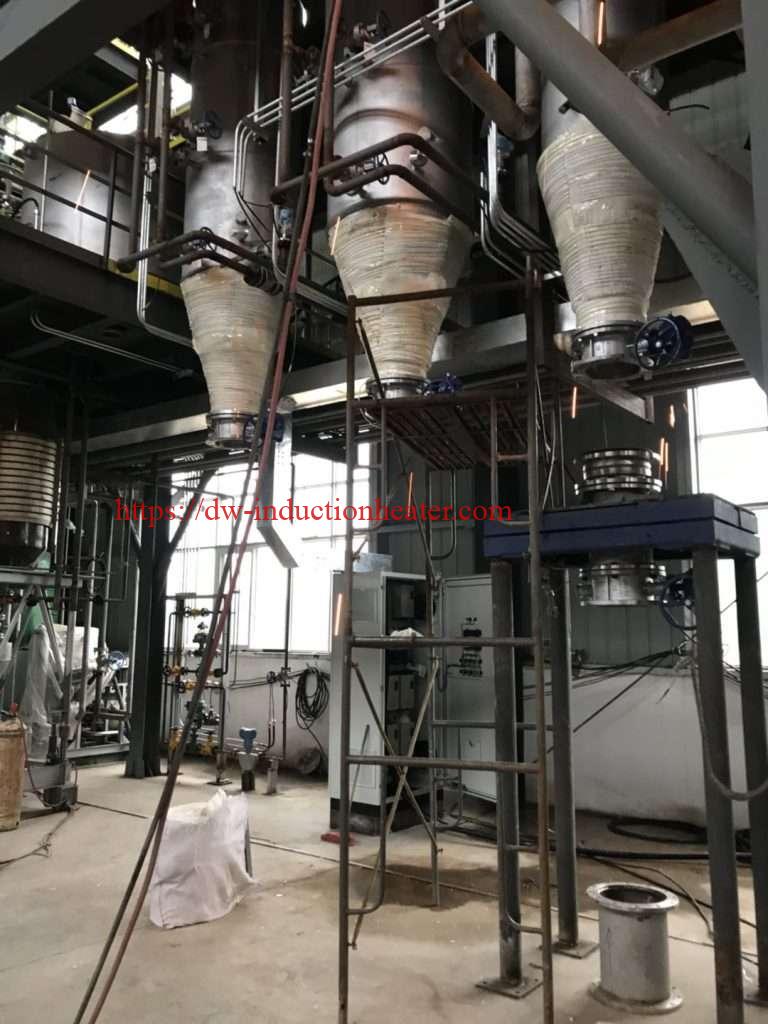
In the realm of industrial processing and chemical synthesis, the ability to control temperature with precision is not just beneficial, it is imperative. The heating of reaction vessels is a critical task that must be executed with both efficiency and uniformity to ensure optimal reaction conditions and product quality. Among the numerous methods available for heating, electromagnetic induction stands out as a superior technique, particularly when applied to stainless steel reaction vessels. This blog post delves into the science behind electromagnetic induction heating, its advantages, and its application in the context of stainless steel reaction vessels.
Electromagnetic Induction: A Primer Before exploring the application of electromagnetic induction in heating reaction vessels, it is essential to understand the underlying principles of this phenomenon. Electromagnetic induction refers to the process by which an electric current is generated in a conductor when it is exposed to a changing magnetic field. This principle was first discovered by Michael Faraday in 1831 and has since been harnessed for a multitude of applications, including induction heating.
The Science of Induction Heating Induction heating occurs when an alternating current (AC) flows through an induction coil, creating a dynamic magnetic field around it. When a stainless steel reaction vessel is placed within this field, the changing magnetic field induces eddy currents within the vessel's conductive material. These eddy currents, in turn, generate heat due to the resistance of the material to the flow of electricity, a phenomenon known as Joule heating. This process results in efficient and direct heating of the vessel without the need for an external heat source.
Advantages of Using Electromagnetic Induction The use of electromagnetic induction for heating stainless steel reaction vessels comes with a plethora of advantages:

Induction heating stainless steel reaction vessels
- Targeted Heating: Induction heating allows for the targeted application of heat, minimizing thermal gradients and ensuring uniform temperature distribution within the vessel.
- Energy Efficiency: Since induction heating directly heats the vessel, it reduces energy losses typically associated with conventional heating methods that rely on conduction or convection mechanisms.
- Fast Heat-up Times: Induction systems can achieve desired temperatures rapidly, which is critical for processes that require quick heat-up cycles.
- Improved Safety: Electromagnetic induction eliminates the need for open flames or hot surfaces, reducing the risk of accidents and improving workplace safety.
- Precise Temperature Control: Modern induction heating systems can be finely tuned to maintain specific temperatures, which is crucial for sensitive chemical reactions.
- Clean and Environmentally Friendly: Induction heating does not produce combustion gases, making it a cleaner alternative to fossil fuel-based heating methods.
Heating Stainless Steel Reaction Vessels with Induction Stainless steel is an alloy commonly used in the fabrication of reaction vessels due to its corrosion resistance and durability. While it is not as conductive as other metals like copper or aluminum, modern induction heating systems are powerful enough to heat stainless steel effectively. The key is to use an induction coil with the appropriate frequency and power level to induce sufficient eddy currents within the stainless steel vessel.
Considerations for Implementation To implement electromagnetic induction heating for stainless steel reaction vessels, several factors must be considered:
- Vessel Design: The vessel must be designed to accommodate induction heating, with considerations for coil placement and vessel geometry.
- Induction System Selection: The induction heating system must be chosen based on the specific requirements of the process, including the size of the vessel, the material properties of the stainless steel, and the desired temperature range.
- Process Integration: The induction heating setup must be seamlessly integrated into the existing process flow to ensure minimal disruption and maximum efficiency.
- Monitoring and Control: Adequate systems must be in place to monitor temperature and control the induction heating process to maintain consistency and quality.
The heating of stainless steel reaction vessels by electromagnetic induction presents a host of benefits that can significantly enhance the efficiency and safety of chemical processes. By leveraging the principles of electromagnetic induction, industries can achieve precise and controlled heating that meets the demands of modern production standards. As technology continues to evolve, the potential applications of induction heating in the processing and manufacturing sectors are bound to expand, signifying a step forward in the pursuit of innovative and sustainable industrial practices.

